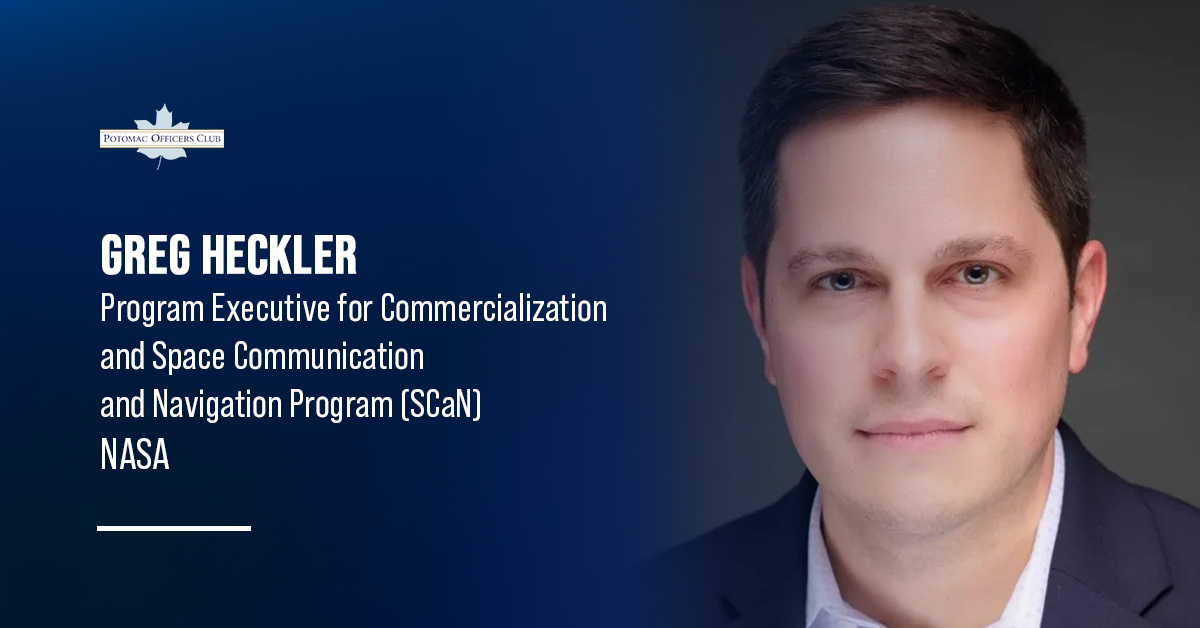
Optical Data Relay: NASA’s Big Bet On Lasers For Space Communications
NASA anticipates more business opportunities for optical data relay technology where it uses lasers to increase its communications throughput by 10-20 times what is possible with legacy radio frequency communications.
Greg Heckler, NASA program executive for commercialization and Space Communications and Navigation, or SCaN, told the Potomac Officers Club that NASA programs like the Artemis moon mission, possible future exploration of Mars and space tourism will require much faster data rates than currently possible with microwave or radio communications. The current standard today is about 100 megabits per second, he said, and the agency likely needs to reach that 10-20-times throughput goal in the next 10 years to support its exploration goals.
NASA has had a few technology demonstrator programs which showed that throughput goal is possible. NASA’s TBIRD demonstration in 2023 transmitted 4.8 terabytes of data, the equivalent of 2,400 hours of high-definition video, in five minutes at 200 gbps in a single pass. Heckler said another laser communications program, Deep Space Optical Communications, showed NASA could increase bandwidth throughput by 10-to-100-times what is possible in radio communications.
Discover how to do business with NASA at the Potomac Officers Club’s 2025 Air and Space Summit on July 31! Hear directly from Heckler at the Optical Data Relay to Modernize Space Communications panel. Learn about standardization, supply chain maturity and mission assurance in optical communications. Sign up today for this action-packed, elite GovCon conference!
What Is the Communications Services Project?
The Communications Services Project, which includes optical data relay, is attempting to pioneer a new era of space communications by partnering with industry to develop advanced networking options for near-Earth satellite communications services. Heckler said NASA is evaluating whether one or more optical technology demonstrations in partnership with industry are necessary to reach its communications throughput goals. NASA may need to buy down technological risk.
“We’ll likely have additional programs of record that need to be stood up when the agency calls us to do so,” Heckler said.
NASA, for the Communications Services Project, is moving away from the capability development phase where multiple contractors are operating under space act agreements to demonstrate optical communications services. While NASA has not finalized a formal acquisition strategy for the Communications Services Project, Kepler said it is planning to issue fair and open service solicitations for future contracts.
Kepler said the Communications Services Project has a steady future budget line through 2030 or 2031 to deliver operational capability. Other communications projects including cislunar space and Mars will have to be programmed according to need, he said.
What Is the SCaN Program?
The NASA SCaN program is the program office for all space communications operations. It provides the communications services required by all NASA human and robotic missions including high-altitude balloons, the International Space Station in low-Earth orbit and Voyager 1, the most distant human-made object that is currently more than 15 billion miles from Earth.
SCaN, which includes the Communication Services Project, has a healthy budget request over the next five years. NASA’s FY 2026 budget request asked for $395 million for SCaN. The agency expects to request the same amount annually through FY 2030.
Kepler Communications is building a commercial optical data relay network in space. Its offering leverages intersatellite optical links, mesh networking and advanced computing to provide real-time, high-throughput connectivity between space assets and ground infrastructure.
Position your GovCon space company for future optical communications business at the Potomac Officers Club’s 2025 Air and Space Summit on July 31! Hear Heckler’s thoughts on how GovCons can partner with NASA at the Optical Data Relay to Modernize Space Communications panel. Learn about optical communications requirements directly from NASA, National Oceanic and Atmospheric Administration and Defense Innovation Unit executives. Take advantage of this extraordinary opportunity to boost your bottom line at this elite GovCon event.

Category: Articles





